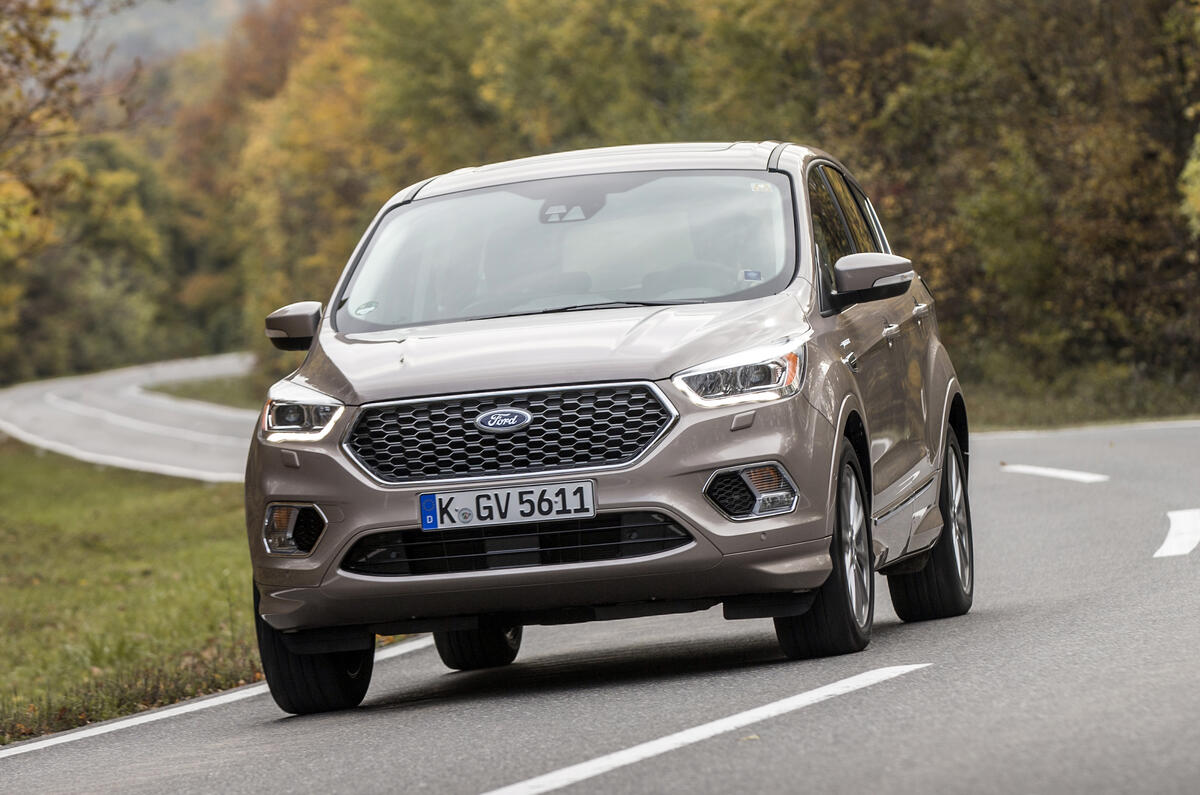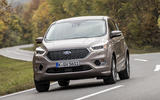What is it?
The new Ford Kuga Vignale is a retaliative swipe at the likes of Audi, BMW and Land Rover (all of whom have been making lots of money out of Europe’s growing love affair with the SUV, thank you very much) by one of Europe’s biggest car makers (still hoping to do equally well out of it, fingers crossed). It’s the best reason that the Blue Oval can currently come up with not to buy an Audi Q3, a BMW X1, a new Volkswagen Tiguan or a lower-end Range Rover Evoque. And yet it’s not quite a good reason.
Having just given the Kuga an averagely thorough mid-life facelift, Ford is banking on a healthy dose of extra standard equipment here, as well as some new quilted leather seats, shiny alloy wheels and relatively appealing personal finance deals, to transform its five-seat SUV into a credible premium-brand alternative.
There are precisely no meaningful mechanical differences between a Kuga Titanium X and a Vignale. In years to come, after the designers and engineers have got their ideas for the Vignale version of the next Kuga locked in from an early stage, there may be mechanical differences – but Ford’s fledgling premium brand project started too late for that to have been the case here.
Instead, the Kuga Vignale gives you almost everything worth having from the car’s options catalogue (park assist, a powered tailgate, adaptive headlights and an 8.0in touchscreen infotainment system, for starters), as well as lashings of Windsor leather, for a price that should still look like value next to a similarly equipped Audi or BMW.
The Kuga’s lesser engines aren’t part of the Vignale range, but you can choose between 180bhp 1.5-litre turbo petrol, 148bhp 2.0-litre diesel or 178bhp 2.0-litre diesel powerplants, as well as automatic or manual gearboxes.
Ford would, of course, be quick to add that, like its other Vignale models, the Kuga goes through 100 extra quality checks during assembly compared with a regular model. It’s dusted with ostrich feathers prior to painting, for heaven’s sake. So what more, exactly, could the company have done to be worthy of that hard-earned splash of cash?


















Join the debate
Add your comment
I still don't understand the
I wish Ford would supply the rest of the world with the real deal all terrain vehicle - the Raptor.
@abkq
Woolworths may all have
Luxury should be conceived as